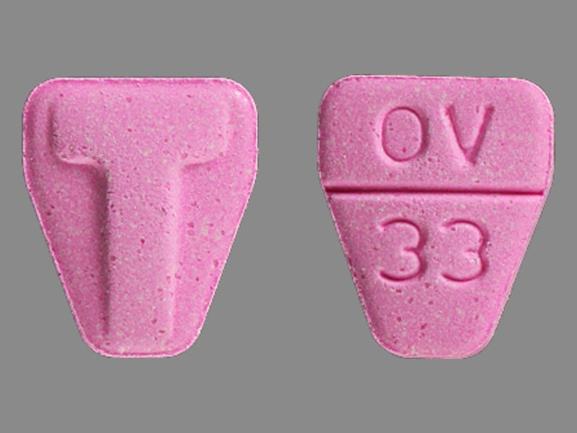Tranxene T-Tab Interactions
There are 507 drugs known to interact with Tranxene T-Tab (clorazepate), along with 10 disease interactions, and 2 alcohol/food interactions. Of the total drug interactions, 31 are major, 441 are moderate, and 35 are minor.
- View all 507 medications that may interact with Tranxene T-Tab
- View Tranxene T-Tab alcohol/food interactions (2)
- View Tranxene T-Tab disease interactions (10)
Most frequently checked interactions
View interaction reports for Tranxene T-Tab (clorazepate) and the medicines listed below.
- Abilify (aripiprazole)
- Adderall (amphetamine / dextroamphetamine)
- alprazolam
- Aspirin Low Strength (aspirin)
- atorvastatin
- Bentyl (dicyclomine)
- clonazepam
- Crestor (rosuvastatin)
- Cymbalta (duloxetine)
- Flexeril (cyclobenzaprine)
- Flonase (fluticasone nasal)
- gabapentin
- Lamictal (lamotrigine)
- Lasix (furosemide)
- Lexapro (escitalopram)
- Lipitor (atorvastatin)
- lorazepam
- losartan
- Lyrica (pregabalin)
- meloxicam
- Metoprolol Succinate ER (metoprolol)
- Mobic (meloxicam)
- Mucinex (guaifenesin)
- Norco (acetaminophen / hydrocodone)
- Norvasc (amlodipine)
- omeprazole
- Synthroid (levothyroxine)
- trazodone
- Vitamin D3 (cholecalciferol)
- Zoloft (sertraline)
Tranxene T-Tab alcohol/food interactions
There are 2 alcohol/food interactions with Tranxene T-Tab (clorazepate).
Tranxene T-Tab disease interactions
There are 10 disease interactions with Tranxene T-Tab (clorazepate) which include:
- acute alcohol intoxication
- closed-angle glaucoma
- drug dependence
- psychosis
- renal/liver disease
- respiratory depression
- seizures
- depression
- obesity
- paradoxical reactions
More about Tranxene T-Tab (clorazepate)
- Tranxene T-Tab consumer information
- Compare alternatives
- Reviews (3)
- Drug images
- Side effects
- Dosage information
- During pregnancy
- Drug class: benzodiazepines
- Breastfeeding
Related treatment guides
Drug Interaction Classification
| Highly clinically significant. Avoid combinations; the risk of the interaction outweighs the benefit. | |
| Moderately clinically significant. Usually avoid combinations; use it only under special circumstances. | |
| Minimally clinically significant. Minimize risk; assess risk and consider an alternative drug, take steps to circumvent the interaction risk and/or institute a monitoring plan. | |
| No interaction information available. |
See also:
Further information
Always consult your healthcare provider to ensure the information displayed on this page applies to your personal circumstances.


